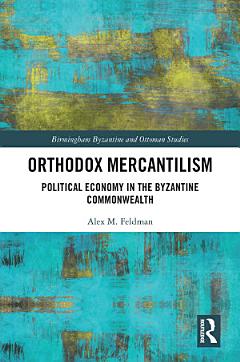This book demonstrates how the political economy of mercantilism was not simply a Western invention by various cities and kingdoms during the Renaissance, but was the natural by-product of perpetually limited growth rates and rulers’ relentless pursuits of bullion. It contributes to discussions of the economic history surrounding the so-called “Great Divergence” between East and West, which would consequently lend context and credence to differences of economic thought in the world today. Additionally, it seeks to explain present economic thought as tacitly derived from implicit antique paradigms. This book advances fields of research from numismatics and sigillography to historical materialism and historical political economy.
Divided into three parts, Orthodox Mercantilism first examines the political theology (the sovereignty) of the œcumene from the early 11th century. Second, it analyzes its peripheral legislation from the customary laws of newly Christianized dynasties up to the Kormčaja Kniga’s adoption (the Nomokanon) by 13th-century Orthodox dynasties across Eastern Europe. Third, it explores how these dynasties (and their own satellite dynasties) hoarded finite bullion to pay for defense, resulting in the 11–14th-century coinless period across Eastern Europe and Western Eurasia.
Appealing to students and scholars alike, this book will be of interest to those studying and researching economic and mercantile history, particularly in the context of Byzantine and Eastern European societies.

